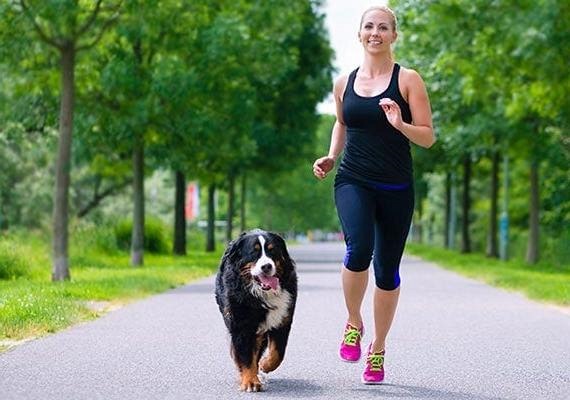Last Updated on: 18th December 2024, 12:29 pm
Physical activity is essential for dogs, enhancing their quality of life and strengthening the bond with their owners. This guide explores the benefits of canine fitness and provides practical advice on engaging in physical activities with your dog.
Starting a fitness routine with your dog offers numerous benefits. It promotes a healthy lifestyle and deepens your connection with your pet. This guide will provide insights and tips on effectively exercising with your dog.
Understanding Your Dog’s Exercise Needs

Exercise requirements for dogs vary based on age, breed, and health. Younger dogs need more vigorous activities, while senior dogs benefit from gentler exercises. High-energy breeds require more exercise than sedentary ones. Health conditions also affect exercise capacity.
- Recognize signs of insufficient or excessive exercise.
- Insufficient exercise may lead to digging, barking, or restlessness.
- Over-exertion signs include excessive panting, lethargy, or reluctance to engage.
Consult a veterinarian before starting a new exercise routine to ensure activities are safe and suitable for your dog’s specific needs.
Meeting your dog’s exercise needs is crucial for their well-being. A balanced approach ensures a fulfilling life for your dog.
Diverse Exercise Options for Your Canine Companion

Walking and Hiking: Tailored Paces for Different Breeds
Walking and hiking are fundamental activities. Adjust the pace and difficulty based on your dog’s breed, age, and health for optimal benefits.
Running: Building Endurance Safely
Running enhances stamina and heart health. Start slow and increase distance gradually. Monitor your dog’s signals to prevent over-exertion.
Interactive Games: Engaging Mind and Body
- Games like fetch and agility training exercise the body and stimulate the mind.
- These activities improve reflexes and strengthen your bond.
- They are adaptable to any space, making them ideal for daily exercise.
Swimming: A Gentle Yet Effective Workout
Swimming is low-impact and ideal for dogs with joint issues. Introduce your dog to water gradually and supervise them at all times.
Incorporate various exercises to cater to your dog’s physical and mental needs, ensuring a happy, healthy life.
Creating a Balanced Exercise Routine

Variety in exercise routines keeps dogs engaged and healthy. Mix activities to prevent boredom and promote well-being. Adjust routines with seasonal changes for consistency.
Consider weather and comfort, adjusting activities to ensure safety and enjoyment year-round.
- Rest days and recognizing overexertion signs are crucial.
- Dogs need recovery time after strenuous activities.
- Signs of overexertion include excessive panting and lethargy.
Design a balanced exercise routine to support your dog’s health and happiness. A mindful approach ensures your dog remains fit and content.
Overcoming Common Challenges in Canine Fitness

Time constraints can hinder exercise routines. Short, high-intensity activities like fetch can be effective. For dogs with health issues, swimming offers a gentle workout. Use sound toys for visually impaired dogs.
Motivate reluctant dogs by discovering activities they enjoy. Offer variety and reward participation with treats or praise.
Adapt to your dog’s needs to overcome challenges, ensuring they remain healthy and active.
Safety First: Exercising with Your Dog

Conduct a pre-exercise health check to ensure your dog is ready for physical activity. A vet can identify any issues that might be exacerbated by exercise.
- Hydration is crucial to prevent overheating. Carry water and take breaks in the shade.
- Watch for heat exhaustion signs like excessive panting.
- Be aware of outdoor hazards like hot pavement and sharp objects.
- Stay vigilant for toxic plants and dangerous wildlife.
Building a Stronger Bond Through Exercise

Exercise strengthens the bond with your dog through shared experiences. Use positive reinforcement to associate exercise with happiness.
- Positive reinforcement encourages your dog and strengthens your bond.
- Celebrate achievements to foster teamwork.
- Set new goals to maintain momentum and explore new challenges.
Exercising with your dog is about building a meaningful connection. It enhances both physical health and emotional bonds.
Bringing It All Together
Exercising with your dog fosters companionship and mutual growth. It balances physical challenges with the rewards of a deeper bond, ensuring health and happiness. Embrace this journey for a future of shared achievements.

